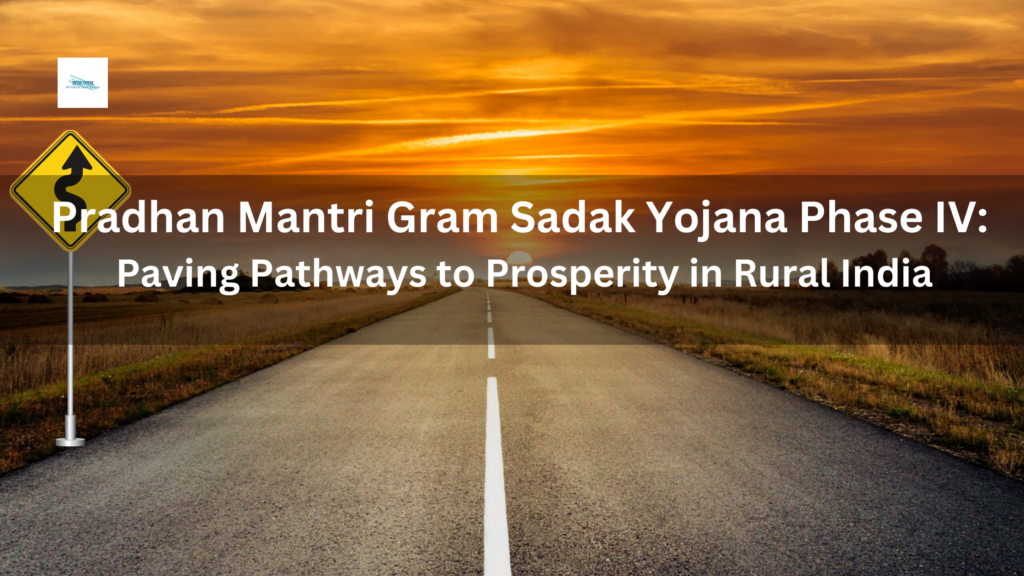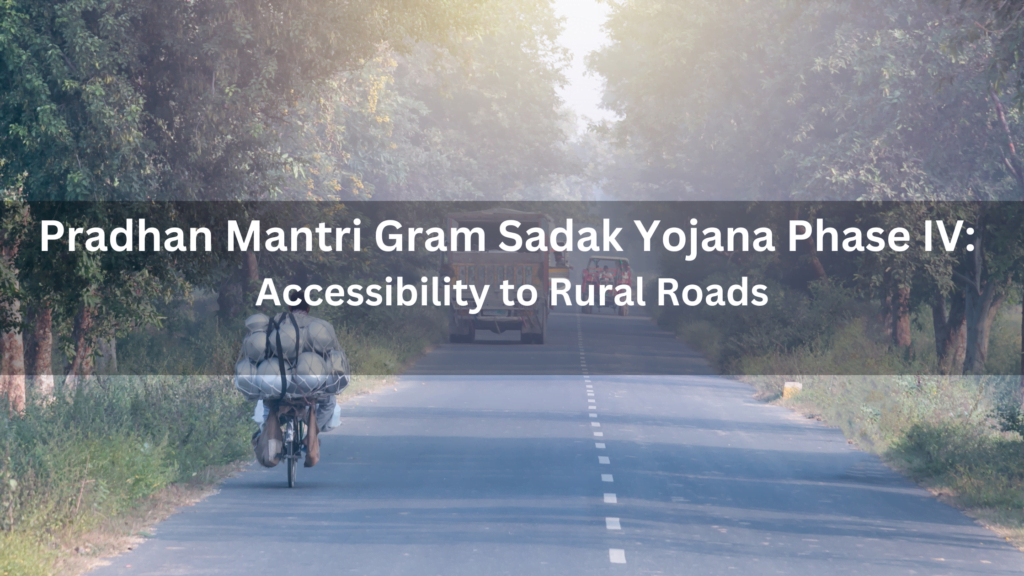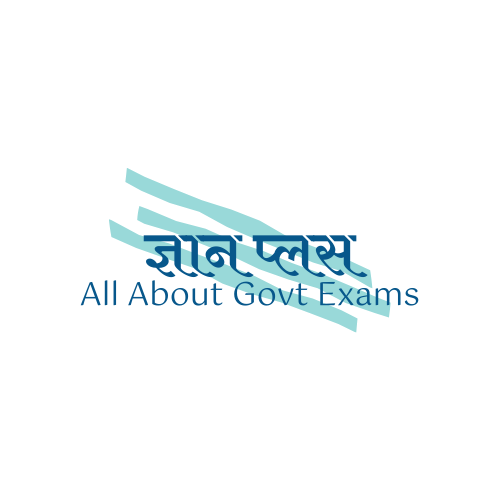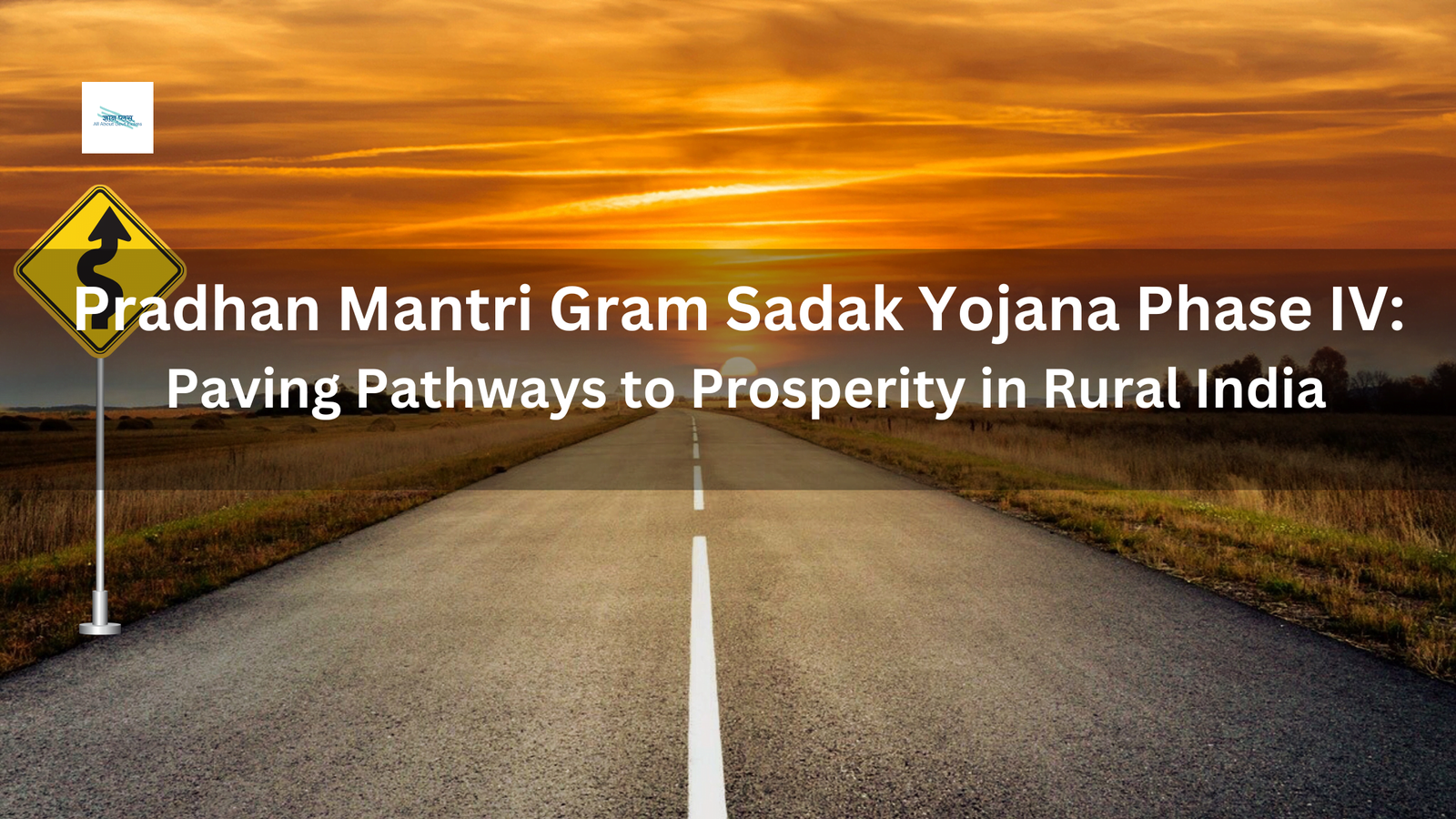Pradhan Mantri Gram Sadak Yojana Phase IV: Paving Pathways to Prosperity in Rural India
Table of Contents
Introduction

In the fabric of India’s developmental saga, the connectivity of its rural spine plays a crucial role. Since the year 2000, the Pradhan Mantri Gram Sadak Yojana (PMGSY) has been instrumental in transforming the rural landscape by forging all-weather road links to the remotest of habitations. The inception of its fourth iteration, PMGSY-IV, is poised to scale these efforts up, filling persistent infrastructural gaps that have long throttled the full potential of rural prosperity.
What is PMGSY-IV?
Aim to connect 25,000 previously unreachable habitations across India
PMGSY-IV, the latest enhancement in a series of initiatives under the Pradhan Mantri Gram Sadak Yojana, is tailored to advance rural road connectivity. This phase is explicitly crafted to construct 62,500 kilometers of durable roads, aiming to connect 25,000 previously unreachable habitations across India. More than just laying down new pathways, this phase is committed to upgrading existing roads to all-weather standards, ensuring sustainable connectivity that withstands the challenges posed by India’s diverse climatic conditions.
Historical Context and Evolution
From its inception, PMGSY has been a transformative force in rural development. The earlier phases focused on basic connectivity, but Since its inception in December 2000, PMGSY has undergone several transformations:
- PMGSY-I: Focused solely on providing connectivity.
- PMGSY-II: Aimed at upgrading crucial through routes.
- RCPLWEA: Addressed needs in Left Wing Extremism affected areas.
- PMGSY-III: Prioritized routes linking to GrAMs, hospitals, and schools, including maintenance mandates for longevity.
PMGSY-IV extends its scope to ensure that roads can endure all weather conditions, thus providing uninterrupted access and connectivity. This shift marks a significant evolution from merely connecting villages to enhancing the quality and durability of these vital links.
Where Will PMGSY-IV Be Implemented?

The geographical focus of PMGSY-IV is expansive, targeting India’s rural heartlands where connectivity gaps are most pronounced. These areas span across:
- Remote Areas: Targeting India’s isolated regions that lack basic road facilities.
- Difficult Terrains: Including the Northeast, Himalayan States, and other special category states where geographical challenges compound connectivity issues.
Each region has its unique challenges, which necessitates customized road solutions that can withstand local challenges.
Who is Involved in PMGSY-IV?
The implementation of PMGSY-IV is a testament to the power of collaborative effort, involving multiple stakeholders:
- Central Government: The central pillar of funding and policy direction, ensuring that the objectives of PMGSY-IV align with the broader goals of national development.
- State Governments: As co-financiers and executors, state governments play a critical role in the ground-level implementation and subsequent maintenance of the infrastructure.
- Local Governments: These bodies help in identifying the specific needs of the communities, ensuring that the roads built serve their intended purpose effectively.
- Rural Communities: The end beneficiaries whose lives are directly impacted by these projects. Their cooperation and feedback are vital for the adaptive execution of road projects to meet local needs effectively.
Why is PMGSY-IV Important?
PMGSY-IV stands as a critical project for several overarching reasons:
- Economic Development: Roads are the arteries of economic activities, facilitating the movement of goods and services and integrating rural areas with larger economic markets.
- Social Benefits: Enhanced road connectivity is directly linked to improved access to educational and healthcare facilities, significantly lifting the quality of life for rural inhabitants.
- Security and Integration: In regions marred by security issues, improved roads enhance security forces’ mobility and aid in the socio-economic integration of these areas.
- Employment Generation: The construction and maintenance of roads under PMGSY-IV are projected to create millions of job opportunities, thereby acting as a catalyst for local employment and skill development.
When is PMGSY-IV Scheduled?
The timeline for PMGSY-IV is strategically set from the financial year 2024-25 to 2028-29. This five-year span is designed to allow for a systematic rollout of construction and upgradation projects, ensuring comprehensive coverage and quality assurance across all targeted habitations. The phased approach helps in meticulous planning and allocation of resources, ensuring that each region receives the attention it requires for effective road connectivity.
How Will PMGSY-IV Be Implemented?
The methodological execution of PMGSY-IV involves several detailed processes:
- Planning: Leveraging advanced technologies and platforms like the PM Gati Shakti portal for integrated and intelligent road alignment planning ensures that the road infrastructure is not only built but also integrated with existing and future networks.
- Construction Techniques: Emphasizing sustainability, the initiative incorporates modern construction technologies and local materials to ensure roads are cost-effective, durable, and environmentally friendly.
- Quality Assurance: Implementing a robust three-tier quality assurance mechanism guarantees that the roads meet all safety and durability standards during and post-construction.
- Maintenance: An integral part of the project, ongoing maintenance ensures the longevity and usability of the roads, providing continual benefits to the rural populations.
Conclusion
As PMGSY-IV unfolds, it is set to redefine the contours of rural connectivity in India. By bridging critical connectivity gaps, this ambitious initiative lays down more than just asphalt; it lays the foundation for enduring rural prosperity and national progress. Through its comprehensive approach to development, PMGSY-IV is not just paving roads but paving the way for a new era of rural transformation.




